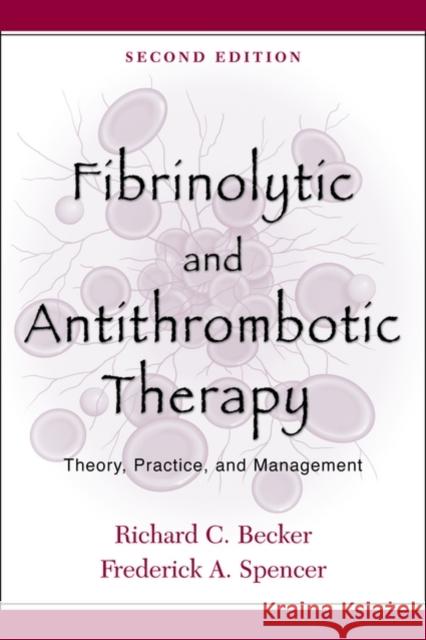Fibrinolytic and Antithrombotic Therapy: Theory, Practice, and Management » książka
Fibrinolytic and Antithrombotic Therapy: Theory, Practice, and Management
ISBN-13: 9780195155648 / Angielski / Miękka / 2006 / 424 str.
Fibrinolytic and Antithrombotic Therapy: Theory, Practice, and Management
ISBN-13: 9780195155648 / Angielski / Miękka / 2006 / 424 str.
(netto: 265,66 VAT: 5%)
Najniższa cena z 30 dni: 269,31 zł
ok. 30 dni roboczych
Bez gwarancji dostawy przed świętami
Darmowa dostawa!
Thrombotic disorders of the circulatory system represent the leading cause of morbidity, motality, and health care expenditure in the United States. Fibrinolytic and Antithrombotic Therapy provides a practical, evidence-based approach to the management of thrombotic disorders for all clinicians involved in the care of patients with these disorders. It provides not only vital conceptual information on fibrinolytic and antithrombotic therapy, but also the means to apply it to everyday decision making and patient care. Focusing on managment guidelines and critical pathways, the text stresses practicality and usability. It will be a valuable resource for the wide range of clinicians involved in the care of patients with these disorders, including cardiologists, emergency physicians, primary care physicians, hematologists, neurologists, intensivists, pharmacists, and nurse practitioners.
The origins of mammalian blood coagulation can be traced back over 400 million years. Despite its long history, it is only within the past century that this complex and pivotal teleologic system has begun to be understood. Most recently, the intricacies of hemostasis and pahtologic thrombosis have come to light, leading the way toward new, more effective, and safer treatment modalities. The Second Edition of Fibrinolytic and Antithrombotic Therapy, even more concise and clinically relevant than the First, provides vital, evidence-based information on management of patients with arterial and venous thrombotic disorders. Since the First Edition, the text has been expanded to cover the evolving topics of atherothrombosis, thrombocardiology, hematologic/thrombophilic conditions, and vascular medicine. It includes up-to-date guidelines for antithrombotic and fibrinolytic therapy, and offers concise summaries of current "standards of care." Chapters are dedicated to discussions of patient-specific therapeutics and to the importance of genomics, proteomics, and metabolomics in defining genotype-phenotype relationships, while throughout the book coagulation, inflammation, and vascular medicine are newly examined as elements in an intricatley-linked triad of biochemical and cellular based phenomenology.










